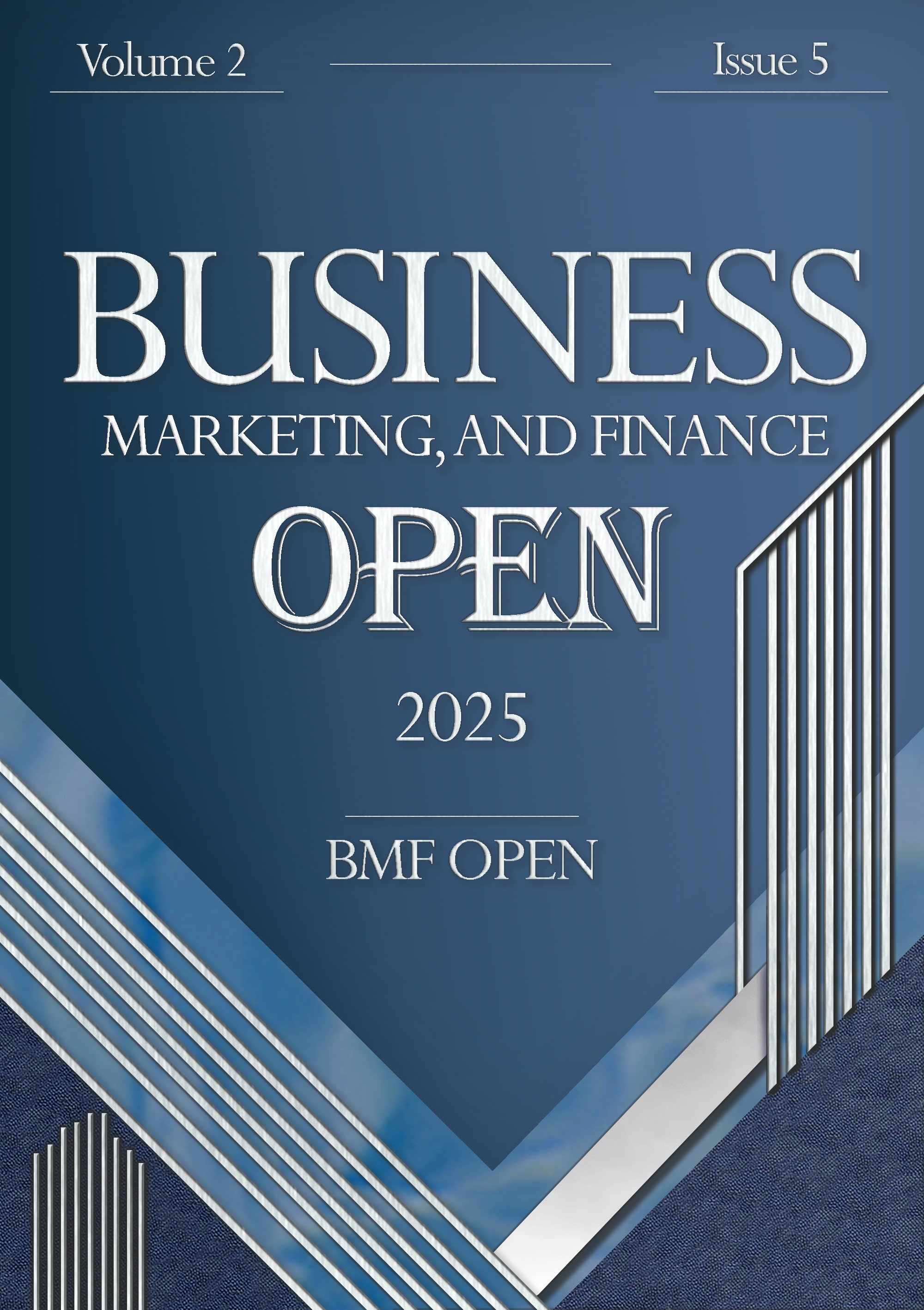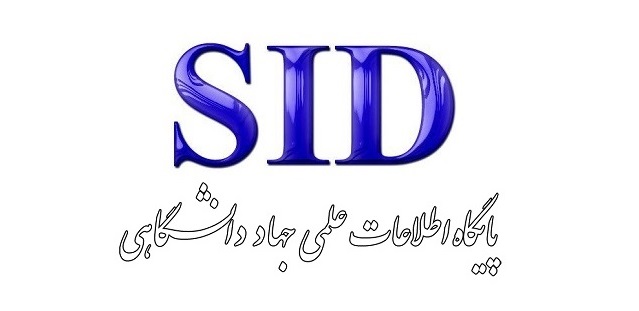The Effect of Volatility Spillover from Macroeconomic Factors on Stock Price Crash Risk Under Uncertainty Conditions Across Time Intervals and Structural Breaks Using BEKK-GARCH Models and the ICSS Algorithm
Keywords:
Volatility spillover, structural breaks, uncertainty, macroeconomic variables, stock price crash riskAbstract
Financial markets, particularly stock markets, are consistently influenced by macroeconomic factors. The volatility of these factors can significantly impact investor behavior and stock price fluctuations. Among these, stock price crash risk, as one of the most critical concerns for investors and economic policymakers, is heavily affected by sudden and unexpected changes in macroeconomic indicators. The present study aims to apply the BEKK-GARCH model to examine the effect of volatility spillover from macroeconomic factors on stock price crash risk under uncertainty conditions across time intervals and structural breaks. In terms of purpose, this research is applied, and in terms of data collection, it is a descriptive, ex-post-facto study. Methodologically, it is analytical and quasi-experimental, and in execution, it is a time-series and cross-sectional study. The statistical population of this research includes companies listed on the Tehran Stock Exchange from 2011 to 2020. Since not all members of the population met the necessary criteria, a purposive sampling method was employed, and 119 companies were selected as the statistical sample. The collected data from the statistical samples, along with the proposed bivariate GARCH models, Granger causality test, Vector Autoregression (VAR) test, and the ICSS algorithm, were analyzed using EViews software (Version 11). The results of the data analysis indicated that macroeconomic variables—including inflation rate, exchange rate, gross domestic product (GDP), money supply, economic growth, interest rate, and liquidity volume—significantly influence stock price crash risk under uncertainty conditions across time intervals and structural breaks.
References
K. Abbass, A. Sharif, H. Song, M. T. Ali, F. Khan, and N. Amin, "Do geopolitical oil price risk, global macroeconomic fundamentals relate Islamic and conventional stock market? Empirical evidence from QARDL approach," Resources Policy, vol. 77, p. 102730, 2022, doi: 10.1016/j.resourpol.2022.102730.
M. K. Anser et al., "Financial development during COVID-19 pandemic: The role of coronavirus testing and functional labs," Financial Innovation, vol. 7, no. 1, p. 9, 2021, doi: 10.1186/s40854-021-00226-4.
F. J. Fabozzi, S. Focardi, L. Ponta, M. Rivoire, and D. Mazza, "The economic theory of qualitative green growth," Structural Change and Economic Dynamics, vol. 61, pp. 242-254, 2022, doi: 10.1016/j.strueco.2022.02.005.
G. K. Magbondé, M. A. Konté, P. Joshi, and A. K. Giri, "Developing countries' economic fundamentals and FDI inflows: The moderating role of institutions Fiscal deficits and stock prices in India: Empirical evidence," Cogent Economics & Finance, vol. 10, no. 1, pp. 2028976-410, 2022, doi: 10.1080/23322039.2022.2028976 10.3390/ijfs3030393.
R. Li, S. Li, D. Yuan, H. Chen, and S. Xiang, "Spillover effect of economic policy uncertainty on the stock market in the post-epidemic era," The North American Journal of Economics and Finance, vol. 64, p. 101846, 2023, doi: 10.1016/j.najef.2022.101846ER -.
F. Riaz, S. Parveen, and A. A. Khan, "Fiscal consolidation and, current-account dynamics in South-Asian countries," Journal of Contemporary Macroeconomic Issues, vol. 3, no. 2, pp. 13-29, 2022.
A. Gyamfi Gyimah, B. Addai, and G. K. Asamoah, "Macroeconomic determinants of mutual funds performance in Ghana," Cogent Economics & Finance, vol. 9, no. 1, p. 1913876, 2021, doi: 10.1080/23322039.2021.1913876.
S. Keswani and B. Wadhwa, "Effect of macroeconomic variables on stock market: A conceptual studyJO - International Journal of Management, IT & Engineering," vol. 7, no. 10, pp. 85-106, 2017.
S. Keswani and B. Wadhwa, "An empirical analysis on association between selected macroeconomic variables and stock market in the context of BSE," The Indian Economic Journal, vol. 66, no. 1-2, pp. 170EP - 189, 2019, doi: 10.1177/0019466219876492.
S. Keswani and B. Wadhwa, "Evaluating the impact of macroeconomic variable on Indian stock market," International Journal of Engineering and Advanced Technology, vol. 8, no. 6, pp. 4427-4434, 2019, doi: 10.35940/ijeat.F8972.088619.
R. Biglarkhani, J. Beytari, and E. Sefidbakht, "The effect of macroeconomic indicators on the financial stress index in the members of the organization of the petroleum exporting countries," International Journal of Finance & Managerial Accounting, vol. 8, no. 29, pp. 195-209, 2023.
S. Y. Ho and B. N. Iyke, "Determinants of stock market development: A review of the literature," Studies in Economics and Finance, vol. 34, no. 1, pp. 143-164, 2017, doi: 10.1108/SEF-05-2016-0111.
S. Patel, "The effect of macroeconomic determinants on the performance of the Indian stock market," NMIMS Management Review, vol. 22, pp. 1-11, 2012, doi: 10.1177/0971102320120207.
T. O. Awokuse, "Trade openness and economic growth: Is growth export-led or import-led?," Applied Economics, vol. 40, no. 2, pp. 161-173, 2008, doi: 10.1080/00036840600749490.
J. Paul and G. R. Benito, "A review of research on outward foreign direct investment from emerging countries, including China: What do we know, how do we know and where should we be heading?," Asia Pacific Business Review, vol. 24IS - 1, pp. 90-115, 2018, doi: 10.1080/13602381.2017.1357316.
F. J. Contractor, S. Lahiri, B. Elango, and S. K. Kundu, "Institutional, cultural and industry related determinants of ownership choices in emerging market FDI acquisitions," International Business Review, vol. 23, no. 5, pp. 931-941, 2014, doi: 10.1016/j.ibusrev.2014.02.005.
Z. Wang, X. Yufei, F. Yating, and L. Ying, "Volatility Spillover Dynamics and Determinants between FinTech and Traditional Financial Industry: Evidence from China," Mathematics, vol. 11, no. 19, p. 4058, 2023, doi: 10.3390/math11194058.
M. Thangamuthu, S. Maheshwari, and D. R. Naik, "Volatility Spillover Effects during Pre-and-Post COVID-19 Outbreak on Indian Market from the USA, China, Japan, Germany, and Australia," Journal of Risk and Financial Management, vol. 15, p. 378, 2022, doi: 10.3390/jrfm15090378.
K. Rai and B. Garg, "Dynamic correlations and volatility spillovers between stock price and exchange rate in BRIICS economies: Evidence from the COVID-19 outbreak period," Applied Economics Letters, vol. 29, no. 8, pp. 738-745, 2022, doi: 10.1080/13504851.2021.1884835.
P. X. Liew, K. P. Lim, and K. L. Goh, "The dynamics and determinants of liquidity connectedness across financial asset markets," International Review of Economics & Finance, vol. 77, pp. 341-358, 2022, doi: 10.1016/j.resourpol.2021.102166.
T. Škrinjarić, L. Dedi, and B. Šego, "Return and Volatility Spillover between Stock Prices and Exchange Rates in Croatia: A Spillover Methodology Approach," Romanian Journal of Economic Forecasting, vol. 24, no. 1, p. 93, 2021.
X. Li, B. Li, G. Wei, L. Bai, Y. Wei, and C. Liang, "Return connectedness among commodity and financial assets during the COVID-19 pandemic: Evidence from China and the US," Resources Policy, vol. 73, p. 102166, 2021, doi: 10.1016/j.resourpol.2021.102166.
A. Erfani and M. M. Gholizadeh, "Examining Structural Breaks and Turbulence in the Foreign Exchange Market and Spillover Volatility Between the Foreign Exchange Market and Tehran Stock Exchange," Financial Knowledge and Securities Analysis, vol. 14, no. 50SP - 169, p. 186, 2021.
H. Mohseni and M. Sadeghi Shahdani, "Spillover Effects of Exchange Rate Volatility on the Capital Market in Iran," Scientific Quarterly of Applied Economic Theories, vol. 6, no. 1, pp. 77-96, 2019.
Ľ. Pástor and P. Veronesi, "Political uncertainty and risk premia," J. financ. econ., vol. 110, no. 3, pp. 520-545, 2013, doi: 10.1016/j.jfineco.2013.08.007.
S. S. Lam, H. Zhang, and W. Zhang, "Does policy instability matter for international equity markets?," Int. Rev. Financ., 2018, doi: 10.1111/irfi.12222.
V. Nagar, J. Schoenfeld, and L. Wellman, "The effect of economic policy uncertainty on investor INFORMATION ASYMMETRY AND MANAGEMENT DISCLOSURES," J. ACCOUNT. ECON., vol. 67IS - 1, pp. 36-57, 2019, doi: 10.1016/j.jacceco.2018.08.011.
G. Colak, A. Durnev, and Y. Qian, "Political uncertainty and IPO activity: evidence from US gubernatorial elections," J. Financ. Quant. Anal., vol. 52, no. 6, pp. 2523-2564, 2017, doi: 10.1017/S0022109017000862.
M. Baker and J. Wurgler, "Investor sentiment and the cross‐section of stock returns," J. Finance, vol. 61, no. 4, pp. 1645-1680, 2006, doi: 10.1111/j.1540-6261.2006.00885.x.
J. Białkowski, K. Gottschalk, and T. P. Wisniewski, "Stock market volatility around national elections," J. Bank. Financ., vol. 32, no. 9, pp. 1941-1953, 2008, doi: 10.1016/j.jbankfin.2007.12.021.
V. T. Alaganar and R. Bhar, "Empirical properties of currency risk in country index portfolios," Q Rev Econ Finance, vol. 47, pp. 159-174, 2007, doi: 10.1016/j.qref.2005.07.002ER -.
D. Choi, "Volatility spillovers between New Zealand stock market returns and exchange rate changes before and after the 1997 Asian financial crisis," Asian J Financ Account, vol. 1, no. 2, pp. 106-117, 2009, doi: 10.5296/ajfa.v1i2.140.
A. Alqahtani and M. Martinez, "US Economic Policy Uncertainty and GCC Stock Market," Asia-Pacific Financial Markets, pp. 1-11, 2020, doi: 10.1007/s10690-019-09300-5.
C. Albulescu, "Coronavirus and financial volatility: 40 days of fasting and fear," 2020, doi: 10.2139/ssrn.3550630.
B. N. Ashraf, "Stock markets' reaction to COVID-19: Cases or fatalities?," Research in International Business and Finance, vol. 54, p. 101249, 2020, doi: 10.1016/j.ribaf.2020.101249.
R. Tehrani, A. Hamidi, A. Khanalipour, and S. Nikookar, "Structural Breaks, Modeling, and Forecasting Stock Return Volatility Using GARCH Models (Case Study: Tehran Stock Exchange)," 2014.
X. Jin, Z. Chen, and X. Yang, "Economic policy uncertainty and stock price crash risk," Account Finance, vol. 58, pp. 1291-1318, 2019, doi: 10.1111/acfi.12455.
Downloads
Published
Submitted
Revised
Accepted
Issue
Section
License
Copyright (c) 2025 Ali Pouladi, Bizhan Abedini, Mohammad Hossein Ranjbar, Ali Amiri (Author)

This work is licensed under a Creative Commons Attribution-NonCommercial 4.0 International License.







